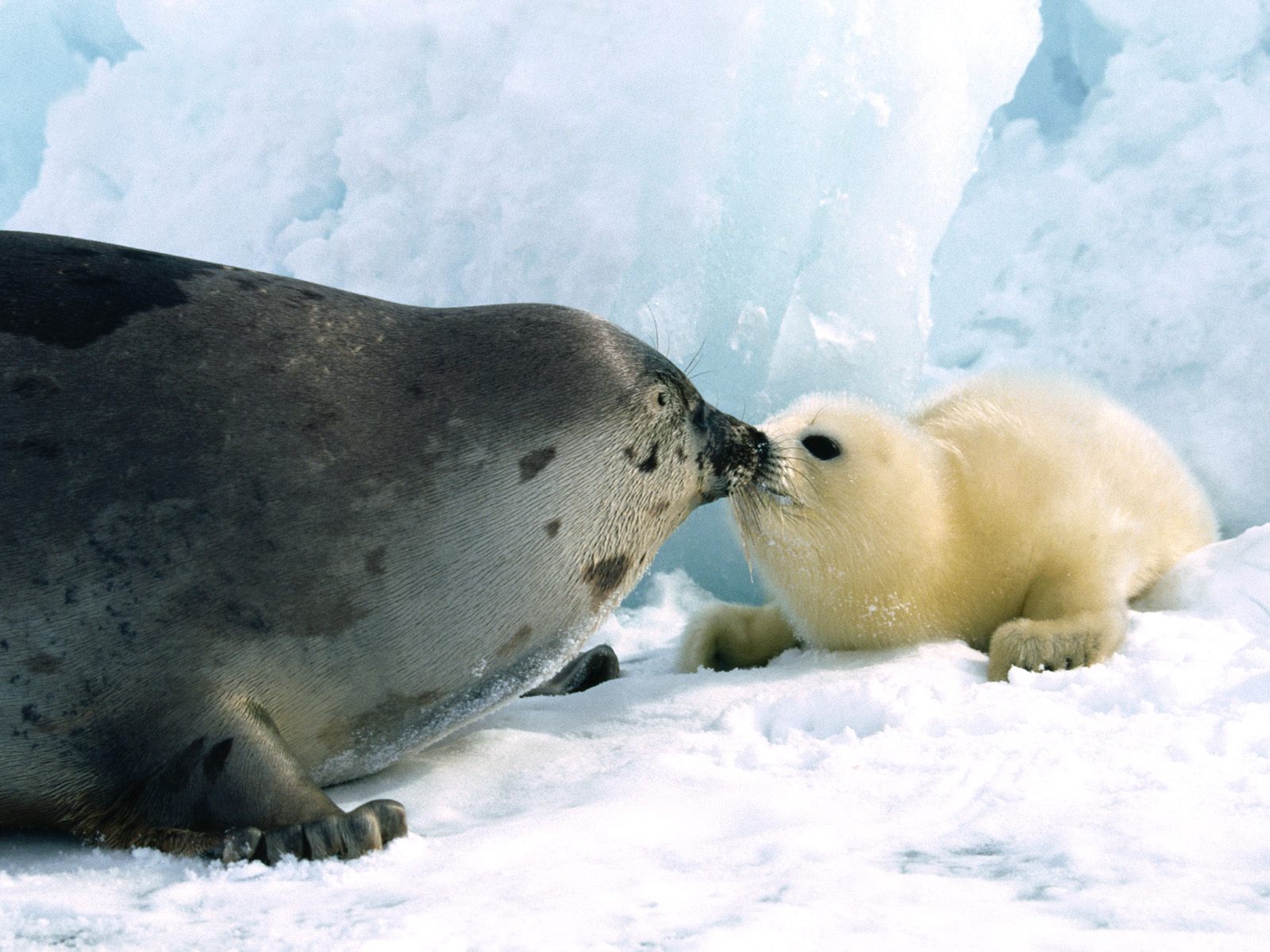Harp Seal
The Harp Seal or Saddleback Seal (Pagophilus groenlandicus) is a species of earless seal native to the northenmost Atlantic Ocean
and the parts of the Artic Ocean.
and the parts of the Artic Ocean.
The Harp Seal has a silvery-gray body. it's eyes are pure black.
it has black harp or wishbone-shaped marking on the back.
The baby harp seal (pup) has a yelloy-white coat at birth, but after three days the
Harp seals combine anatomical and behavioral approaches to managing their body temperatures, instead of elevating their metabolic rate and energy requirements. A thick coat of blubber
insulates its body and provides energy when food is scarce or during
fasting. Blubber also streamlines its body for more efficient swimming.
Brown fat warms blood as it returns from the body surface as well as providing energy, most importantly for just-weaned pups.it has black harp or wishbone-shaped marking on the back.
The baby harp seal (pup) has a yelloy-white coat at birth, but after three days the
the
coat turns white and stays white for about 12 days
. Adult harp seals grow up to be 1.7 to 2.0 m long and weight from 140 to 190 kg
. Adult harp seals grow up to be 1.7 to 2.0 m long and weight from 140 to 190 kg
Flippers act as heat exchangers, warming or cooling the seal as needed. On ice, the seal can press its fore-flippers to its body and its hind-flippers together to reduce heat loss.
 Vision is its critical sense. Its eyes are proportionally large and contain a large spherical lens, improving its focusing ability. Its pupil is mobile to help it adapt to the intense glare of the Arctic ice. Its retina is rod-dominated and backed by a cat-like and reflective tapetum lucidum,
enhancing its low light sensitivity. Its rods best sense blue-green,
while its cones help with bright light and may provide some color
discrimination. Its cornea is constantly tear-covered, to protect it from salt. Lacking tear ducts, it "cries" to remove its tears. On ice, the mother identifies her offspring by smell. This sense may also warn of an approaching predator. Underwater, this seal closes its nostrils and smells nothing. Its whiskers, called vibrissae,
lie in horizontal rows on either side of its snout. They may provide a
touch sense, and underwater, also respond to low-frequency vibrations,
such as movement.
Vision is its critical sense. Its eyes are proportionally large and contain a large spherical lens, improving its focusing ability. Its pupil is mobile to help it adapt to the intense glare of the Arctic ice. Its retina is rod-dominated and backed by a cat-like and reflective tapetum lucidum,
enhancing its low light sensitivity. Its rods best sense blue-green,
while its cones help with bright light and may provide some color
discrimination. Its cornea is constantly tear-covered, to protect it from salt. Lacking tear ducts, it "cries" to remove its tears. On ice, the mother identifies her offspring by smell. This sense may also warn of an approaching predator. Underwater, this seal closes its nostrils and smells nothing. Its whiskers, called vibrissae,
lie in horizontal rows on either side of its snout. They may provide a
touch sense, and underwater, also respond to low-frequency vibrations,
such as movement.




